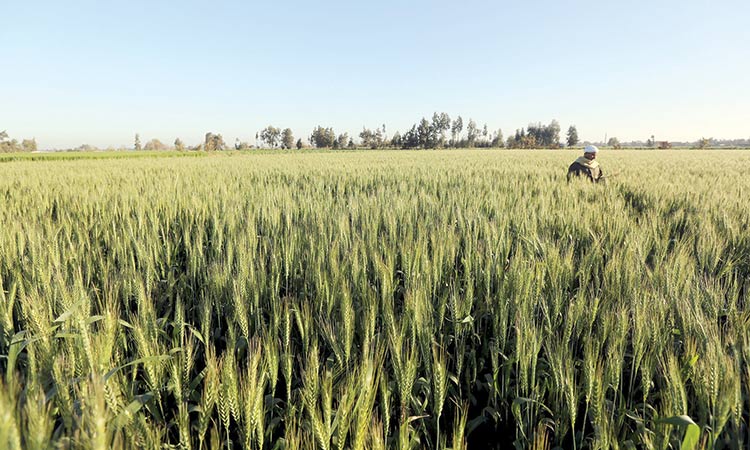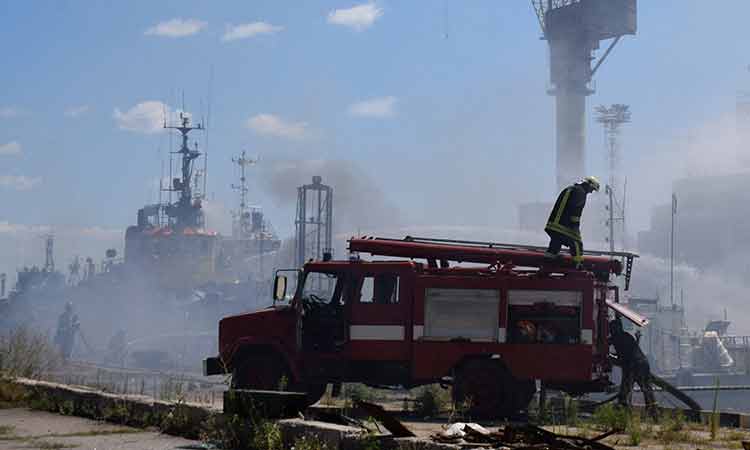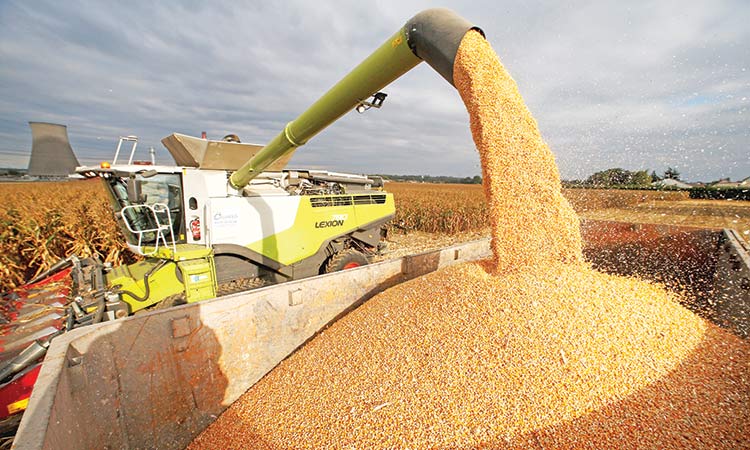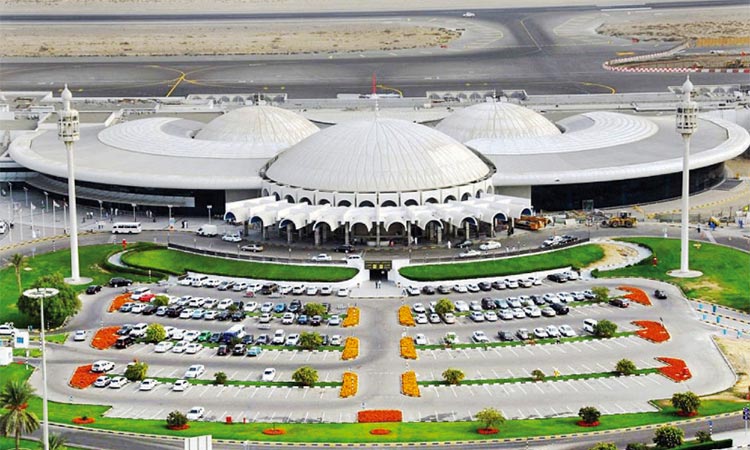Argentina’s wheat farmers hit hard by drought in key areas
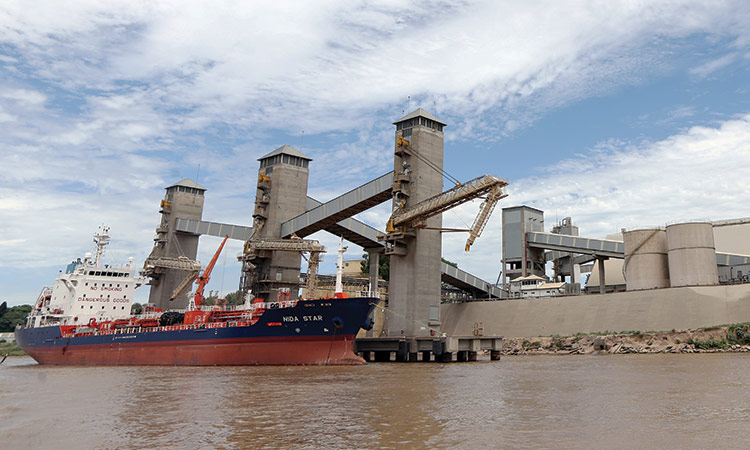
Grain is loaded aboard a ship at a port near Rosario, Argentina. Reuters
Argentina is the world’s sixth-largest wheat exporter and ninth-largest producer, according to data from the US Department of Agriculture.
The Buenos Aires Grain Exchange warned of poor wheat quality in the southern region of Argentina amid inconsistent weather conditions across key wheat producing regions in the country, which could lead to a decline in production and export volumes.
Soya planting can start in the days ahead after rains pelted Argentina’s agricultural belt, but the moisture arrived too late for wheat yields to recover from damage caused by weeks of dryness in some key farm areas, farmers said.
“We have had some rain now, so we are starting to plant soyabeans. But it did not come in time to help with wheat yields,” said Pedro Vigneau, who operates a farm outside the town of Bolivar in the heart of the bread-basket province of Buenos Aires.
“Some of the damage to wheat is irreversible,” Lopez said.
From an original estimate of 21 million tonnes of wheat in the 2019/20 crop, Lopez said he now expects a harvest of 19 million to 19.5 million tonnes. “The weather has been uneven. But in north and west Buenos Aires, south Santa Fe and east Cordoba provinces, it has rained and there should be no problems,” he said.
Most of Argentina’s central farm belt has seen showers over recent days, said David Hughes, a farmer in the Buenos Aires town of Alberti.
“We’ve had 30 to 40 millimeters in those area, which is enough to start planting soya,” Hughes said. “Wheat was hardest hit by dryness in southern Buenos Aires province. The damage in other areas should be limited to 5%.”
Growers are in a defensive crouch this season after President Mauricio Macri lost his bid for a second term in the recent election. They are cutting investment and hedging against political risk by planting soy in some areas that had originally been earmarked for more expensive corn cultivation.
“Farmers in this part of the country are transferring 10% to 20% of planned corn areas to soy. Some are transferring more,” Vigneau, from the town of Bolivar, said.
Peronist Alberto Fernandez won the presidential election. His running mate is Cristina Fernandez de Kirchner, a populist icon who served as Argentina’s president from 2007 to 2015. She feuded with farmers, applying trade controls that Macri quickly ditched when he took office in December 2015.
The Argentine wheat is harvested in December and January. Corn is brought in March through June while soy gets harvested March through May.
Meanwhile, Argentine oil company YPF has loaded its first commercial liquefied natural gas (LNG) cargo for export from a new floating facility, trade sources said on Friday.
Argentina’s export joins a wave of new supply flooding the spot market which has depressed Asian spot prices to their lowest in a decade for this time of the year.
The state-owned firm issued a tender which closed on Nov.6 to sell 2.1 trillion British thermal unit (Tbtu) of LNG for loading from FLNG Tango, the liquefaction vessel off Bahia Blanca, the sources said.
YPF exported its first test LNG shipment in June, but this was its first commercial cargo, they added.
The cargo loaded from the facility on Oct.26 on the LNG tanker Excalibur and is now moored off Bahia Blanca with destination stated as Atlantic Basin, shiptracking data from Refinitiv showed. Bahia Blanca is a small port city not far from the Argentine capital Buenos Aires.
Details of the buyer were not immediately available.
The Excalibur is chartered by YPF, two shipping sources said, meaning that the cargo was sold on a delivered-ex-ship (DES) basis, unlike the test cargo. The test cargo was loaded on the same vessel but at that time it was chartered by US producer Cheniere, they said.
“It takes around 40 days to produce and load a full cargo their next one will be on the vessel Methane Kari Elin,” one of the traders said.
YPF said in June it began loading the first shipment of LNG for export from Argentina, a milestone for the country, which is looking to exploit its huge Vaca Muerta shale play.
“The first commercial cargo will likely end up in Europe or Americas as they don’t have the shipping length,” the trader added.
Reuters

